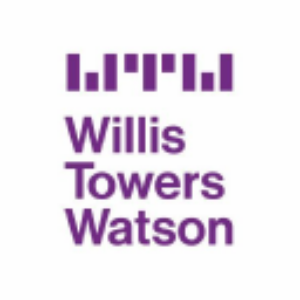Global healthcare benefit cost increases — on average — will hold steady in 2022 says Willis Towers Watson
Willis Towers Watson forecasts a global increase of 8.1% in employer-sponsored healthcare benefits costs for 2022, consistent with this year. The 2022 Global Medical Trends Survey reveals significant regional variations, with costs expected to rise 14.2% in Latin America and 7.6% in the U.S. Telehealth adoption has accelerated, with over 50% of insurers offering it across all plans. Insurers anticipate that healthcare costs will continue to rise significantly in the coming years, driven by overuse of care and the impact of COVID-19 on medical trends.
- Forecasted global healthcare benefit cost increase of 8.1% aligns with 2021 levels.
- Majority of insurers adopting telehealth, indicating a shift towards cost-effective healthcare management.
- 75% of insurers believe contracted provider networks effectively manage medical costs.
- Projected cost increases vary significantly by region, highlighting instability.
- Overuse of care remains a primary driver of rising medical costs.
Insights
Analyzing...
Costs by region, however, will be marked by price volatility due to the uneven global trajectory of the pandemic
ARLINGTON, Va., Nov. 16, 2021 (GLOBE NEWSWIRE) -- Employer-sponsored healthcare benefit cost trends are expected to increase
When comparing specific geographical regions, insurers expect cost trends to be as high as
“COVID-19 has produced the biggest impact to global medical trend variation the industry has seen, and we expect the repercussion and volatility from it to extend into 2022 and beyond,” said Eric McMurray, Global head of Health and Benefits, Willis Towers Watson. “Countries and employers are feeling the impact differently. Some have experienced the recovery’s demand for regular medical services in 2021, while others will see it next year or after. The pandemic, combined with the changing face of work, has had a significant effect on medical trends, delivery of services and the future drivers of medical claims.”
According to the survey, medical insurers acknowledge the pandemic has really helped accelerate telehealth services, underscored by the potential for cost reductions that virtual healthcare creates. Over half of global insurers now offer telehealth across all plans, and nearly four in 10 insurers (
“Telehealth’s momentum will be sustained post-pandemic. In fact, the role of telehealth will continue to evolve not only as a navigation tool to speed access to the right care but also as a means to close gaps in access to care,” said Francis Coleman, managing director, Willis Towers Watson.
Global medical trends: Healthcare benefit cost growth, 2020 – 2022
| 2020 | 2021 | 2022 projected | |
| Global+ | |||
| North America | |||
| Latin America+ | |||
| Asia Pacific | |||
| Europe | |||
| Middle East/Africa |
+Global and regional trend rates are weighted based on GDP per capita. Due to the hyperinflationary nature of the Venezuelan economy, Venezuela has been excluded from Latin America regional and global totals.
Seventy-five percent of survey respondents said using contracted networks of providers for all treatments is the most effective method for managing medical costs; preapproval for scheduled inpatient services (
The leading driver of medical costs continues to be overuse of care (
Insurers named cancer, cardiovascular and musculoskeletal as the top three conditions by cost, identical to last year’s findings. Interestingly, respondents ranked musculoskeletal as the top condition by incidence of claims this year compared with ranking it fifth in last year’s survey.
“COVID-19 has caused volatility in the trend numbers and in the leading causes of claims, as the sedentary lifestyle that often accompanies working from home has increased the risk of musculoskeletal injuries. In addition, as most employers can attest, mental health claims are also on the rise,” said Coleman.
About the survey
Willis Towers Watson conducted its 2022 Global Medical Trends Survey between July and September 2021. A total of 209 leading insurers representing 61 countries participated in the survey. The U.S. medical trend data are drawn from the Willis Towers Watson National Trend Survey.
About Willis Towers Watson
Willis Towers Watson (NASDAQ: WLTW) is a leading global advisory, broking and solutions company that helps clients around the world turn risk into a path for growth. With roots dating to 1828, Willis Towers Watson has 45,000 employees serving more than 140 countries and markets. We design and deliver solutions that manage risk, optimize benefits, cultivate talent, and expand the power of capital to protect and strengthen institutions and individuals. Our unique perspective allows us to see the critical intersections between talent, assets and ideas — the dynamic formula that drives business performance. Together, we unlock potential. Learn more at willistowerswatson.com.
Media contact
Ed Emerman: +1 609 240 2766
eemerman@eaglepr.com








